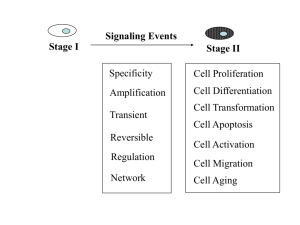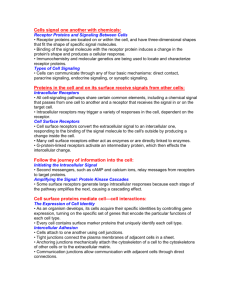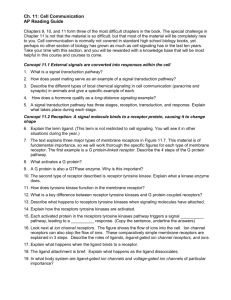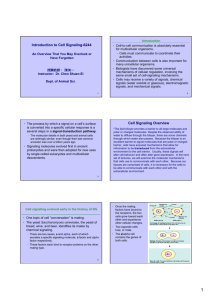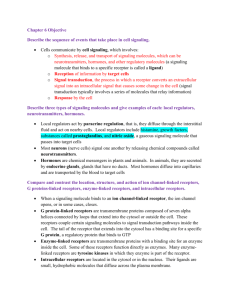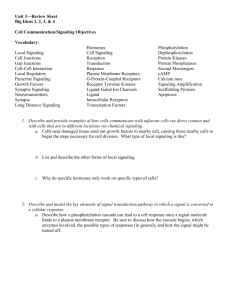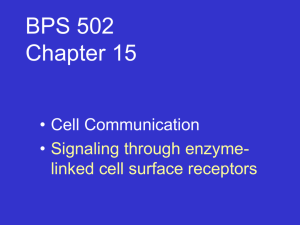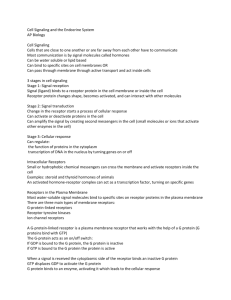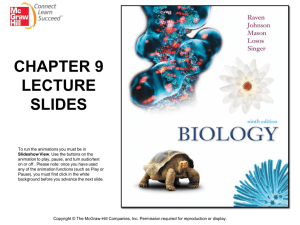Biology 340 Molecular Biology
advertisement
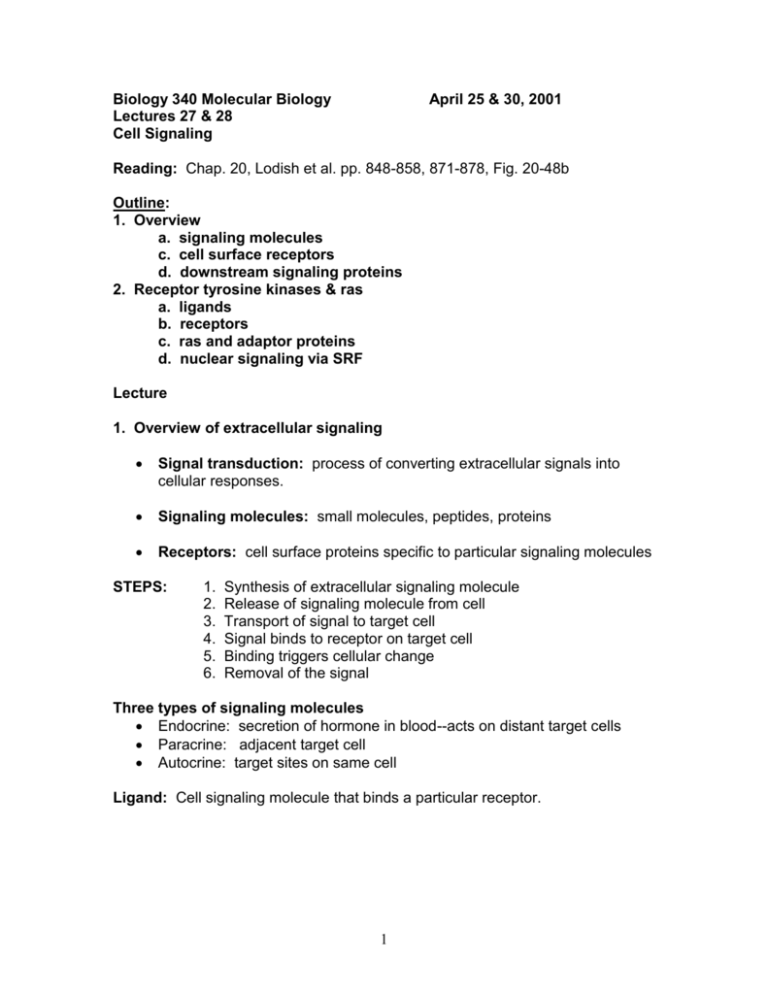
Biology 340 Molecular Biology Lectures 27 & 28 Cell Signaling April 25 & 30, 2001 Reading: Chap. 20, Lodish et al. pp. 848-858, 871-878, Fig. 20-48b Outline: 1. Overview a. signaling molecules c. cell surface receptors d. downstream signaling proteins 2. Receptor tyrosine kinases & ras a. ligands b. receptors c. ras and adaptor proteins d. nuclear signaling via SRF Lecture 1. Overview of extracellular signaling Signal transduction: process of converting extracellular signals into cellular responses. Signaling molecules: small molecules, peptides, proteins Receptors: cell surface proteins specific to particular signaling molecules STEPS: 1. 2. 3. 4. 5. 6. Synthesis of extracellular signaling molecule Release of signaling molecule from cell Transport of signal to target cell Signal binds to receptor on target cell Binding triggers cellular change Removal of the signal Three types of signaling molecules Endocrine: secretion of hormone in blood--acts on distant target cells Paracrine: adjacent target cell Autocrine: target sites on same cell Ligand: Cell signaling molecule that binds a particular receptor. 1 Receptor protein: Shows binding specificity for particular ligand Receptor-ligand complex mediates a specific cellular response=effector specificity. Types of hormones 1. Small lipophilic molecules that diffuse across plasma membrane and interact with intercellular receptors. Complex of ligand and receptor moves to nucleus to activate transcription. Examples: Steroids, thyroid hormone, retinoic acid, vitamin D 2. Hydrophilic molecules that bind cell surface receptors. Examples: peptide hormones (insulin, glucagons), small charged molecules (epinephrine) 3. Lipophilic hormones with cell surface receptors Prostaglandins--16 different molecules Types of cell-surface receptors that interact with hydrophilic ligands 1. G-protein coupled receptors receptors for epinephrine, serotonin, glucagon 2. ion channel receptors acetylcholine receptor at neuromuscular junction 3. tyrosine kinase linked receptors receptors for cytokines, interferons, HGF 4. receptors with intrinsic enzyme activity receptors for insulin, many growth factors Second messengers: intracellular signaling molecules that transmit signal from ligand-receptor complex to other molecules in the cell. Intracellular signaling proteins 1. GTPase switch proteins act as molecular switches on when bound to GTP off when bound to GDP 2 two classes: ras family (monomeric), trimeric G-proteins 2. Protein kinases enzymes that add a phosphate group to other proteins major types: serine/threonine kinases, tyrosine kinases activity of kinases opposed by protein phosphatases 3. Adapter proteins link cell signaling proteins via protein-protein interactions Receptor tyrosine kinases NGF, nerve growth factor PDGF, platelet derived growth factor FGF, fibroblast growth factor EGF, epidermal growth factor Insulin 1. Ligand binds receptor 2. Activates receptor's intrinsic protein kinase activity. Most RTKs dimerize on binding ligand (insulin already a dimer) and phosphorylate tyrosines on dimer partner. Phosphotyrosines may serve as docking sites for other downstream signaling proteins. 3. Stimulate signal transduction cascade. Ras (a GTP switch protein) is a key signaling molecule. Mutant ras has been associated with many human cancers. Ras is linked to RTK via adaptor proteins such as GRB2 and Sos. 4. Changes in cellular physiology and/or patterns of gene expression. Ras induces a kinase cascade that lead to activation of MAP kinase and ultimately to phosphorylation of transcription factors. Kinase cascades allow a huge amplification of the initial signal. TCF (ternary complex factor) is a transcription factor phosphorylated by MAP kinase that along with SRF (serum response factor) activates genes contain SREs (serum response elements), Fig. 20-48b. 3
